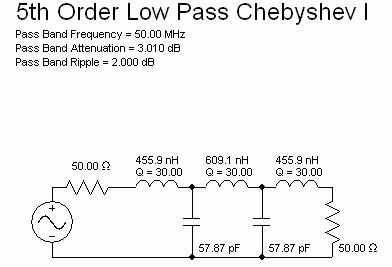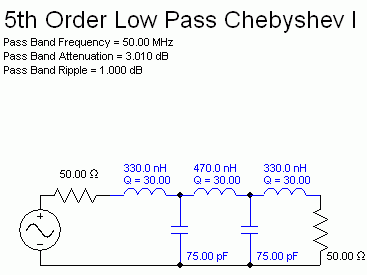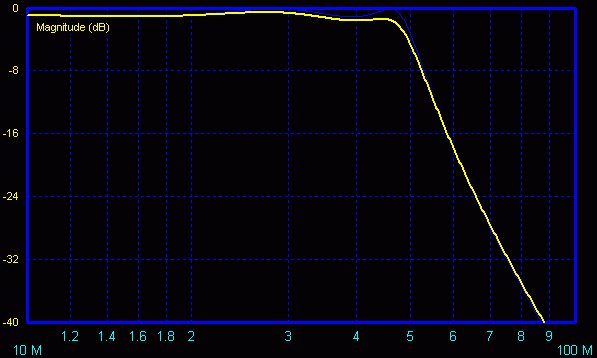neazoi
Advanced Member level 6
50MHz LPF?
hello I am constructing a 1Hz to 40MHz broadband receiver and I need a 50MHz low pass filter for receiving only in order to attenuate the unwanted vhf/uhf. the filter needs to allow frequencies from 1Hz to 40MHz to pass.
I have found this **broken link removed** and schematic here **broken link removed**
I was wondering if you have anything better to propose and also if air wound coils are better than SMD or commercial "resistor like shape" coils. I think air wound should have greater Q so they may be better but I am not sure.
hello I am constructing a 1Hz to 40MHz broadband receiver and I need a 50MHz low pass filter for receiving only in order to attenuate the unwanted vhf/uhf. the filter needs to allow frequencies from 1Hz to 40MHz to pass.
I have found this **broken link removed** and schematic here **broken link removed**
I was wondering if you have anything better to propose and also if air wound coils are better than SMD or commercial "resistor like shape" coils. I think air wound should have greater Q so they may be better but I am not sure.


